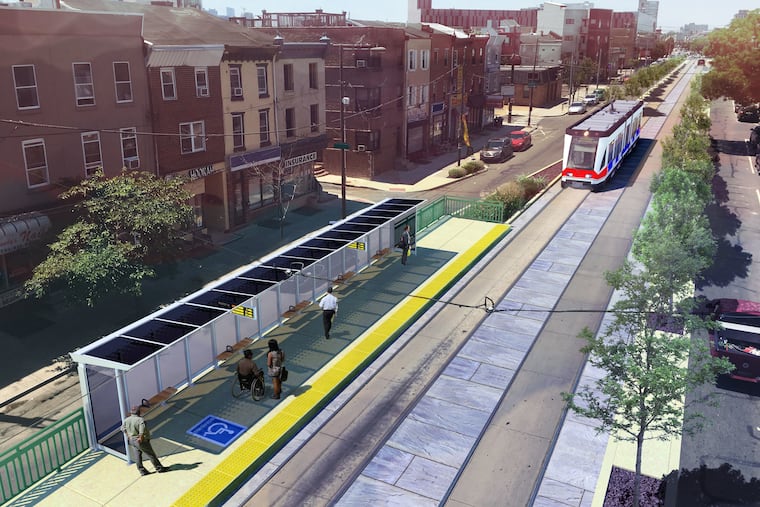$5.7M land deal moves SEPTA’s trolley modernization project forward
“I think the big takeaway is that this just shows SEPTA’s commitment to trolley modernization and future economic vitality of the region," said Bob Lund, SEPTA deputy general manager.

SEPTA’s plan to bring its trolleys into the modern age has taken a small but significant step forward.
The authority’s board last week approved a $5.7 million deal to secure about 28 acres in Southwest Philadelphia to be used for the storage, maintenance, and operations of trolleys, including a future fleet of longer, ADA-accessible vehicles outlined in its trolley modernization program. The decision to move on the plot was about a decade in the making, had a nod from the city, and was necessary now to protect the former industrial site from development, said Bob Lund, SEPTA deputy general manager.
Board approval to acquire the land at 6901 Elmwood Ave. from its owner, Property Exchange Agent LLC, is part of the project’s early planning stages. Next steps depends upon future funding.
“I think the big takeaway is that this just shows SEPTA’s commitment to trolley modernization and future economic vitality of the region," Lund said.
The trolley modernization program, replacing decades-old trolleys with modern light rail vehicles, is expected to cost about $1.6 billion. SEPTA committed nearly $9.4 million in its $640 million capital budget to continue headway on trolley modernization, as well as on the extension of the Norristown High Speed Line into King of Prussia.
The plan to bring in the “state-of-the-art vehicles" will be “challenging,” “expensive,” and “rewarding,” according to a 2017 “Modern Trolley Station Design Guide” from the Delaware Valley Regional Planning Commission.
“But, once implemented, trolley modernization will breathe new life into Philadelphia’s trolley service,” the report said.
Existing trolley facilities are outdated, don’t have the capacity to expand or enough on-site parking for workers, and won’t be able to accommodate new vehicles, according to a SEPTA staff summary of the land acquisition. The property owner rejected SEPTA’s $5.7 million offer in July, which had raised the possibility of using eminent domain.
Will Herzog, chair of the SEPTA Youth Advisory Council, an outreach group, called SEPTA’s trolley system “such a vital piece of infrastructure.” In a normal year, trolley Routes 10, 11, 13, 34, and 36 carry about 65,000 riders a day, while the Route 15 trolley, now served by buses as its historic PCC II cars undergo evaluation and maintenance, see an additional 12,000 daily riders. Suburban Routes 101 and 102 transport about 9,000 passengers each day.
“It’s really lucky that we got that property before anyone else did," Herzog said.
SEPTA faces a crisis to both its operating and capital budgets with fewer riders to pay fares and a plunge in vehicle traffic that’s affected payments the Pennsylvania Turnpike Commission is scheduled to make to the state Department of Transportation to help support public transportation in the commonwealth.
SEPTA General Manager Leslie Richards said in recent testimony to state lawmakers that the authority has “identified $250 million in capital projects — this includes bridges, station accessibility, electric bus procurements — that will need to be stopped or delayed.”
Asked if he expects funding for trolley modernization to be more difficult to secure given the financial challenges the pandemic has created, Lund called funding for large-scale projects “an issue” even before COVID-19.
“As we try to go through the challenges of today, between COVID funding and everything else," he said, “we cannot put blinders on to what our future is.”